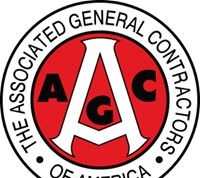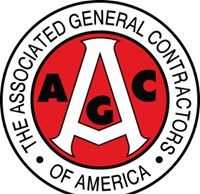Testimony of Treasury Federal Insurance Office Director Michael Mcraith before the Senate Committee on Banking, Housing and Urban Affairs
WASHINGTON, D.C. – April 28, 2015 – (RealEstateRama) — Chairman Shelby, Ranking Member Brown, Members of the Committee, thank you for inviting me to testify today on the state of the insurance industry and insurance regulation.
The Federal Insurance Office (FIO) publishes an annual report to address the state of the insurance industry and related regulatory or macroeconomic developments. FIO’s 2014 Annual Report included sections describing (1) a financial overview of the U.S. insurance industry, (2) developments and issues with respect to consumer protection and access to insurance, (3) regulatory developments, and (4) international developments.[1]
Among the highlights, the 2014 Annual Report analyzed data demonstrating that, in the aggregate, insurers operating in the United States continue to show resilience in the aftermath of the financial crisis, including record levels of capital and surplus. At year-end 2013, the life and health sector (L/H) reported $335 billion in capital and surplus, and the property and casualty sector (P/C) reported approximately $665 billion in capital and surplus.
Aggregate net written premiums in the L/H sector declined slightly from the record level set in 2012, largely as a result of lower annuity sales, whereas P/C sector net written premiums grew modestly in 2013.
2013 bottom line numbers were encouraging. Record net income levels were achieved in 2013 for both the L/H and P/C sectors. The protracted low interest rate environment, however, has been a drag on net income, particularly for life insurers. To partially mitigate declining investment yields, insurers, as a sector, have marginally increased asset allocations towards lower rated and less liquid assets with longer durations, indicating increased portfolio risks. The L/H sector benefitted from the performance of separate accounts, and recorded net income of $44 billion for 2013, as compared to the previous record high of $37 billion set in 2006. Lower catastrophe losses and favorable loss development contributed to higher net income for the P/C sector, which reached a record $72 billion; the previous high net income was $66 billion, also set in 2006.
Per capita premium expenditures are a measure of private insurance density, or prevalence, throughout a national economy. On a per capita basis, from 2009-2014 insurance premiums for the combined L/H and P/C sectors have increased in the United States at an average rate of 1.6 percent, better than developed economies in Western Europe but less than growth rates in fast-developing Asian economies. For example, while France’s per capita premium expenditure declined by 3.7 percent from 2009-2014, China’s increased by13.6 percent.
Aggregate premiums as a percentage of Gross Domestic Product (GDP) are a measure of private insurance penetration in a national economy. In 2005, aggregate L/H and P/C premiums amounted to 8.91 percent of U.S. GDP, and in 2013 total premiums amounted to 7.51 percent of gross domestic product, a decline of 15.7 percent. This indicates that the aggregate growth of U.S. premium volume did not maintain the pace of growth in GDP. In that same period, developing economies saw an increase in private insurance premium volume as a percentage of GDP, an indication that developing economies are pursing private capital to support retirement security and the protection of personal and commercial assets.
To be sure, the U.S. insurance sector, including those firms that are internationally active, has an important role in the national economy. Indeed, in the United States, insurance is both local and global. Insurers compete in markets throughout the country, underwrite risk on a local and personal basis, and consumers have the benefit of local support from state regulators.
The insurance sector, both nationally and globally, is evolving dramatically, and we appreciate the opportunity to reflect with you upon where the sector is now and where it is going.
Recent federal developments are one aspect of change within the U.S. insurance sector. In January, Congress passed and President Obama signed the Terrorism Risk Insurance Program Reauthorization Act of 2015 (Reauthorization Act). The Reauthorization Act both renewed and reformed the Terrorism Risk Insurance Program (TRIP), and, in Title II, reestablished the National Association of Registered Agents and Brokers (NARAB). With respect to TRIP, the program includes sensible reforms that further reduce taxpayer exposure, increase private sector contributions, and support national security and continued economic growth. When fully operational, NARAB will serve as a solution to the long-standing multi-state licensing and administrative burden confronted by many insurance agents and brokers.
Much attention has been devoted to developments in international standard-setting in the insurance sector. International insurance standard-setting activities are not new. In fact, the National Association of Insurance Commissioners (NAIC) was among the founding members of the International Association of Insurance Supervisors (IAIS) in 1994. Since that time, U.S. state insurance regulators have worked to set and meet international standards. Each of the 56 independent members of the NAIC (50 states, the District of Columbia and five territories) is also a member of the IAIS, and state regulators have more votes in the IAIS plenary session (15) than any other jurisdiction.
More recently, since it became a full member in 2012, and consistent with its statutory role, FIO has represented the United States on prudential aspects of international insurance matters, including representing the United States at the IAIS.
In October 2014, the Board of Governors of the Federal Reserve System (Federal Reserve) became a full member of the IAIS. With the combined participation of state insurance regulators, the Federal Reserve and FIO, all aspects of the unique U.S. insurance oversight system are actively engaged at the IAIS.
When dealing with the IAIS standard-setting work, FIO, the Federal Reserve and state insurance regulators work together extensively and regularly coordinate. As the U.S. participants of IAIS, the leadership and staff of all three groups are in close and meaningful engagement through frequent calls and meetings. Our collaboration is a testament to the shared objectives of the agencies involved.
Any discussion of the U.S. insurance sector and its regulation must begin with the recognition that the United States has the most diverse and competitive insurance market in the world. Thousands of insurers operate in the United States, ranging from small mutual companies operating in a few rural counties to massive global firms engaged in a variety of financial activities. As the Illinois Director of Insurance, I learned firsthand about the importance of small and mid-size insurers to the marketplace and to local and regional economies. Consolidation pressures in the small insurer market segment have existed for years, but we recognize and want to preserve the important contributions of local and regional insurers to consumers and communities.
Supporting much of this local and global activity is the global reinsurance industry – a market with many important participants based outside the United States. In fact, based on gross premiums ceded, more than 90 percent of the unaffiliated reinsurance of U.S. property and casualty insurers is placed with a non-U.S. reinsurer or a U.S. reinsurer with a non-U.S. holding company parent.
In recognition of both the U.S. market and the U.S. system of insurance supervision, FIO’s international work is guided by three priorities: (1) to promote and enhance a competitive U.S. insurance market through effective, efficient supervision; (2) to establish prudentially sound, equal-footing for U.S.-based insurers to operate successfully around the world; and (3) to safeguard financial stability.
At the same time that we support diverse and competitive U.S. insurance markets, FIO strongly supports continued growth of the increasingly international insurance market and the prudential standards that promote consistent and rigorous oversight across jurisdictions.
In the last ten years, the pace of globalization in insurance markets has increased exponentially and is expected to continue to grow in the coming years. Insurers based in the United States are pursuing opportunities for organic growth in new markets. Aon Benfield’s 2014 Country Opportunity Index, which identifies the world’s most promising P/C markets, listed five Asian markets among its top ten, in addition to three from Africa and two from South America. Even a cursory review of the demographics in Brazil, China, India, Indonesia and South Korea demonstrates this point.
In fact, U.S.-based insurers are extending operations around the world, and a growing number expect in the coming years to generate 40 percent or more of revenue from outside the United States. In addition, in 2014, well-known U.S. insurers that are subsidiaries of non-U.S. holding companies accounted for more than 13 percent of aggregate L/H and P/C premium volume.
Private market premium volume growth shows that insurers are committed to international growth. Measuring global market share by aggregate premium volume, from 2008 to 2013, the United States’ share of the world market declined from 29 percent to 27 percent despite an increase in real dollars of more than $32 billion. For the same period, China’s share increased in real dollars by more than $137 billion and as a percentage of the global market from 3 percent to 6 percent. As reported in FIO’s 2014 Annual Report, South Korea, Brazil and South Africa experienced similar proportional increases.
These numbers reiterate the message that developing markets present important growth opportunities for U.S.-based firms and that growth will continue at an increasing rate in the years to come. Growing economies around the world seek private sector solutions through life insurance products for retirement security and through property and casualty insurers for private asset accumulation and protection.
Due to global economic growth, many jurisdictions – both developing and well-established markets – are modernizing insurance supervisory regimes. For example, in North America, both Mexico and Canada have undertaken sweeping insurance regulatory reforms, just as have Australia, China and South Africa.
Global supervisors welcome the influx of private capital from insurers domiciled in the United States, and elsewhere, and are increasingly desirous of a common language and common standards by which to understand how a globally active insurer manages risk. These supervisors want to know how consumers subject to that supervisor’s protection fit into the insurer’s broader risk management approach. This is fundamentally a question of consumer protection: how are consumers around the world protected when insurers operate globally?
As the insurance sector evolves globally, the United States will continue to contribute constructively in support of international standards that, when implemented, will benefit U.S. consumers, U.S. insurers and global financial stability. Working together, U.S. participants of the IAIS are already leading developments in international standard-setting activities. Absent the participation and leadership of U.S. participants, international standard-setting activities would continue without reflecting the unique features of the U.S. market and regulatory structure.
IAIS Capital Standard Development
International coordination can be difficult even under the best of circumstances. However, through the IAIS, our engagement, communication and coordination with other countries has been collaborative and productive. This is not to say that we agree with every IAIS member on all substantive, technical or procedural issues. Insurance supervisors from around the world come together through the IAIS to learn, to analyze, to develop and to understand best practices for insurance supervision. Each country or region brings its unique perspective and predisposition to the conversation, and all have the opportunity to learn. The challenge is to find a path to consensus, around practical and achievable objectives.
The development of capital standards at the IAIS dates back to at least 2009, with the commencement of a common framework for the supervision of internationally active insurance groups, or ComFrame. More broadly, and in response to the global financial crisis, G-20 Leaders at recent Summits asked the Financial Stability Board (FSB) to develop a policy framework to address the systemic and moral hazard risks associated with systemically important financial institutions. In response, the FSB, which coordinates G-20 financial regulatory initiatives, developed a framework and called on the relevant international standard-setting bodies to, among other things, develop methodologies for identifying globally systemically important financial institutions (G-SIFIs) in each financial services industry.
In July 2013, the FSB called upon the IAIS to develop a backstop capital requirement (now known as Basic Capital Requirement, or BCR) by 2014 for globally systemically important insurers (GSIIs) and to develop in 2015 an approach to higher loss absorbency (HLA) for GSIIs in 2015. These policy measures conform with the G-20 endorsed FSB framework for systemically important financial institutions, which calls for higher loss absorbency for all G-SIFIs. The FSB called upon the IAIS to continue development of ComFrame, and to include in ComFrame a quantitative insurance capital standard. This comprehensive work plan and the related deliverables (including ComFrame, BCR and HLA) have been welcomed by G-20 Leaders.
At its 2014 Annual Meeting in October, after more than 12 months of data analysis, testing and consultation, the IAIS adopted an approach to the BCR. The BCR is the first global group capital standard for the insurance sector and provides a simplistic method to measure capital within an insurance group across jurisdictions. The BCR will serve as the starting point for both the HLA and the insurance capital standard (ICS), the latter of which will likely supersede the BCR as the future basis for HLA for GSIIs.
Development of HLA for the insurance sector presents a significant technical challenge. Insurers, the products sold by insurers, and existing jurisdictional capital requirements, vary greatly around the world. Following months of intense analysis and drafting, the IAIS consultation paper on HLA will be released in June for a period of sixty days.
With respect to the ICS, the IAIS released a consultation paper in December and written comments were received from stakeholders for more than sixty days. The consultation paper was highly technical, and generated 1500 pages of comments from stakeholders.
As publicly described in March 2015, IAIS members agreed on the “ultimate goal” of the ICS which provides a focal point, a guiding light, for the technical work that is underway. IAIS members agreed:
The ultimate goal of a single ICS will include a common methodology by which on ICS achieves comparable, i.e. substantially the same, outcomes across jurisdictions. Ongoing work is intended to lead to improved convergence over time on the key elements of the ICS toward the ultimate goal. Not prejudging the substance, the key elements include valuation, capital resources and capital requirements.[2]
As technical experts from the United States and around the world sort through the many complexities of the key elements, the “ultimate goal” provides the boundaries to shape and influence those conversations and the day-to-day developments.
Given the enormous amount of technical work and the magnitude of the global differences, achieving this “ultimate goal” will not happen quickly. In the near term, building upon data, analysis and testing, progress will be made and convergence will improve. Importantly, work will proceed incrementally toward milestones that are realistic, achievable, and that are fact-driven and consensus-driven.
IAIS Organizational Reform
IAIS organizational reform has improved its financial independence, efficiency and transparency. Formerly, the IAIS charged stakeholders as much as $20,400 annually in order to receive the designation of “observer” and thereby receive access to certain meetings, social events, and information. Through 2014, the IAIS received approximately 40 percent of funding from observers – primarily industry – thereby creating the appearance of a quid pro quo arrangement that detracted from the credibility of IAIS members and stakeholders. Due to the IAIS organizational reform, the financial dependence upon industry no longer exists.
At the same time, the IAIS has dramatically improved its engagement with and transparency to stakeholders. Perhaps most importantly, the IAIS no longer discriminates between stakeholders that pay the fee and those that do not. In addition, the following examples illustrate the improvements to the IAIS processes for stakeholder consultation:
· In 2014, stakeholder sessions for all IAIS workstreams amounted to less than 12 hours, but in 2015 IAIS stakeholder sessions for all IAIS already amount to more than 60 hours, with more sessions to be scheduled.
· The IAIS web site will contain information available to the public, not just to stakeholders who pay the annual fee.
· With the launch of a consultation paper, the IAIS will host explanatory meetings and calls so that stakeholders can learn about substance and structure of the document in advance of providing comments.
· After receiving comments on a consultation paper, the IAIS will publish the comments received, release a summary of comments, and offer a reply to the comments.
· For the various work streams (e.g. capital, governance or market conduct), stakeholder contact lists are being developed so that those stakeholders can provide input to a consultation paper prior to the paper’s release for comment.
· Release of a monthly newsletter to describe developments in the preceding month and events scheduled for the coming month.
While only a few IAIS workstreams were directly open to stakeholders before 2015, the new governance and transparency practices provide a uniform approach to openness and stakeholder engagement for all IAIS activities.
Finally, U.S. stakeholders have opportunities to meet and work with the U.S. participants. Working with state regulators and the Federal Reserve, FIO has coordinated opportunities for stakeholders, including industry and consumer advocates, to meet and present to all U.S. members of the IAIS at one time, thereby enabling the U.S. members to receive the views of a wide range of U.S. stakeholders in a U.S.-based forum.
EU and U.S. Insurance Project
The EU and the United States are both significant insurance markets. In terms of premium volume, despite the growing prominence of developing markets, the EU ranks first and the United States ranks second as consolidated markets. The EU and the United States are home to many of the world’s most prominent global insurers – large multinational insurance groups that are pushing more aggressively into new markets around the world. The EU is also modernizing its approach to insurance regulation through Solvency II, a new EU-wide harmonized insurance regulatory regime.
With these facts in mind, FIO convened the insurance leadership of both jurisdictions at Treasury in January 2012. At this initial meeting, participants included FIO, state regulators, the European Commission, the European Insurance and Occupational Pension Authority, and the United Kingdom’s Prudential Regulatory Authority. We call this the EU – U.S. Insurance Project (Project). State insurance regulators, including Commissioners Voss, McCarty and Consedine, among others, have made invaluable contributions to the effort. Going forward, we welcome the participation of the Federal Reserve in the Project.
Thanks to the participants, the Project has been a demonstrably successful transatlantic collaboration. In September 2012, the Project released a report that identified similarities and differences between the regulatory approaches in the EU and United States, and, in December 2012, the Project released an initial Way Forward, which outlined common policy objectives and milestones through 2017. Following the EU’s adoption of Solvency II in late 2013, and the December 2013 release of FIO’s report entitled “How To Modernize And Improve The System Of Insurance Regulation In The United States,” continued modernization by state regulators, and developments at the IAIS, the Project released a revised Way Forward in August 2014 which updated the common objectives and milestones.[3] Of course, as with all such international developments, implementation will occur in the United States only through federal and state authorities.
A central feature of the Project is work towards a potential covered agreement between the EU and the United States. A covered agreement is a unique statutory authority given to Treasury and the Office of the United States Trade Representative (USTR) to negotiate an agreement between the United States and one or more foreign jurisdictions that relates only to prudential insurance and reinsurance measures.
The 2014 Way Forward reiterates Treasury’s support for USTR and FIO to pursue a covered agreement with respect to state-based reinsurance collateral requirements. The 2014 Way Forward also identifies both group supervision and confidentiality/professional secrecy as areas for which the possibility of a covered agreement should be explored.
Recently, the EU nations gave the European Commission the negotiating mandate to pursue an agreement with the United States that will “greatly facilitate trade in reinsurance and related activities” and “will enable us…to recognize each other’s prudential rules and help supervisors exchange information.”
Importantly, a covered agreement must provide tangible benefits for U.S. stakeholders. While the mechanics of a covered agreement process remain under development, and negotiations with the EU are not scheduled, FIO welcomes robust engagement with Congress, state regulators, and other stakeholders on the opportunity presented by a covered agreement.
Conclusion
Through effective collaboration at home and abroad, U.S. insurance authorities are positioned to provide U.S. leadership that complements the shared interest in a well-regulated insurance market that fosters competition, promotes financial stability, and protects consumers.
Importantly, it bears repeating that, in all of our work, both internationally and domestically, our priorities will remain in the best interests of U.S. consumers, U.S. insurers, the U.S. economy, and jobs for the American people.
We welcome the chance to work with this Committee and its excellent staff, and look forward to more discussions on these important topics.
Thank you for your attention. I look forward to your questions.
[1] FIO’s 2014 Annual Report can be found at http://www.treasury.gov/initiatives/fio/reports-and-notices/Documents/2014_Annual_Report.pdf.
[2] The ultimate goal of the ICS can be found in the IAIS’s March 2015 Newsletter and can be found at http://iaisweb.org/index.cfm?event=getPage&persistId=47DFD3A5155D896B001B1CB99C644F78.
[3] FIO’s report on How to Modernize and Improve the System of Insurance Regulation in the United States can be found at http://www.treasury.gov/initiatives/fio/reports-and-notices/Documents/How%20to%20Modernize%20and%20Improve%20the%20System%20of%20Insurance%20Regulation%20in%20the%20United%20States.pdf. The Project’s revised Way Forward can be found at http://www.treasury.gov/initiatives/fio/EU-US%20Insurance%20Project/Documents/The%20Way%20Forward%20(July%202014%20Revision).pdf.

















